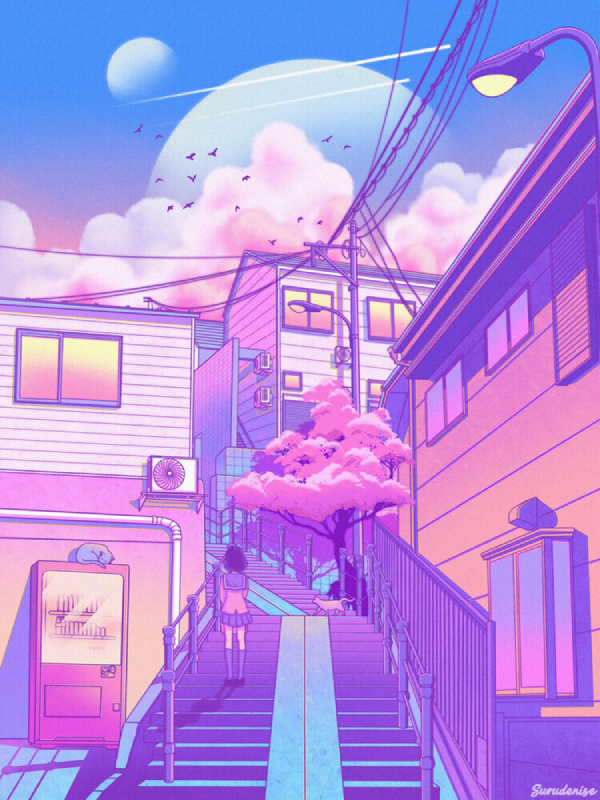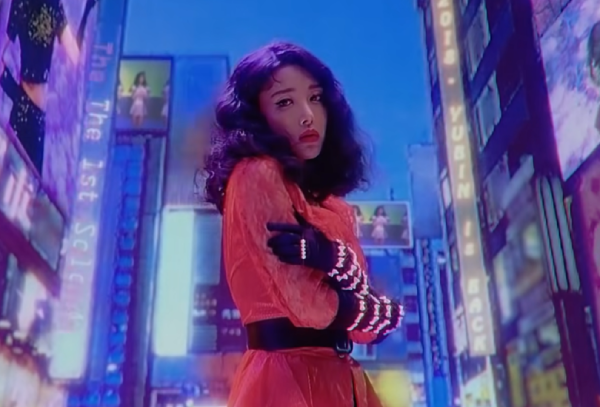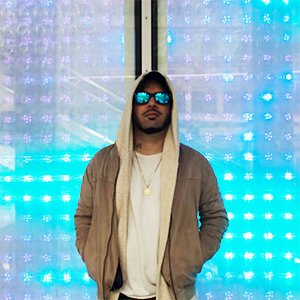City Pop Aesthetics
City Pop Aesthetics
Contemporary City Pop aesthetics are at the intersection of Vaporwave, Future-funk, and Retro Anime design ideologies. Generally a combination of re-occurring motifs combining 80s style-tropes mixed with Japanese sensibilities, pastel colors, and scenery involving city life along with similar concepts. The thought of the genre having it’s own specific look and over-used imagery seems a bit weird given that it’s been retroactively assigned but internet genres usually develop these visual memes due to being so tied to the multimedia element of internet 2.0. Back in the 80s during the time City Pop was being made the themes discussed in this blog post weren’t how anyone in those days would describe what they feel about the music, but this is 2020 so we re-contextualize the past in our vision of what an idealized version might have been like.
Popular trends in City Pop aesthetics tend to re-imagine 80s in some form with a heavy emphasis on nostalgia, sentimentality, and memories both foreign and familiar. Things that were common back then like listening to tape cassette players, drinking in neon-lit bars, or riding in a car late at night can usually channel the mood that the genre evokes. Anything that would give the sense of living in Japan during it’s bubble economy era could be considered City Pop aesthetics—that’s how loosely defined all of this all is. I recall when Vaporwave was all roman busts, Pepsi cans, and gradient backgrounds so it shows you where a lot of these aesthetics are rooted.
Image Credit: Tree13 via IG
City Scenes
City Scenes are the quintessential aesthetic for City Pop because it’s the basis of why the genre is named the way it is. It was big city music for wealthy city dwellers with money to spend due to the economic miracle that was their bubble era. With strong economies comes the need for luxury condos, improved urban areas, and architecture with room for more liberal creative inspirations. Usually, an image of a skyline in pastel colors would satisfy the requirements, but any beautiful scene in a city would suffice as long as it’s in pastel tones but it varies as I’ve seen all sorts though these seem most common. With some popular anime from the 80s having been produced in this watercolor kind of look it has become an obsession for artists today wanting to pay homage to the past.
Image credit: Surudenise
Retro Anime
It’s easy to understand why retro anime would be a popular City Pop aesthetic because of its close association with this style of music. Many City Pop artists contributed to popular anime from that era such as Cat’s Eye, City Hunter, & Bubblegum Crisis to name a few. Animated gifs are usually a trendy reference point for many artists to work as there is an almost unlimited amount online. Modern designing software can perfectly recreate old production techniques with minimal effort to give art that lo-fi charm. Given that a lot of anime from the 80s were set in cities it’s natural to take inspiration from the way their vision of what urban life was and where it would go in the context of their once juggernaut economy.
Image Credit: Shay Sanchez
Cars/DRIVING
Listening to City Pop while driving in a car is a very common reference due to the fact that Japanese car exports were huge in the 70s and 80s with Honda and Toyota dominating markets. With the advent of car stereos, it would be typical to hear people blasting popular music while driving around tuned into the radio or cassette deck. A popular theme in many City Pop songs like Driving My Love by Anri, Midnight Driver by Minako Yoshida, and Drive Song by EPO. You can really capture the essence of City Pop aesthetics by recreating the mood of a late-night drive listening to tapes while the city lights blur past you.
Retro Technology
The more obsolete or unpractical the better. Items like handheld stereos, portable record players, tape players, and vintage electronics are easy to tie into City Pop aesthetics because many of those products were being produced and manufactured by a variety of Japanese mega-companies that had their hand in almost every category of consumer tech. A Sony Walkman is typically the quintessential City Pop item as it almost defines the 80s era in terms of the music becoming more of a commodity for those who could afford to buy and listen to their favorite artists on the go. A walkman was basically a status symbol.
Seiko Matsuda for Sony
Anything Neon
Nothing speaks to lovers of Japanese City Pop more than neon. Singers name their songs after it, artists paint it in their scenery, and its electric feel embodies the spirit of capitalism. The streets of major Japanese cities are saturated with neon glow almost everywhere you look and this style is fully evocative of the cosmopolitan mood City Pop creates. It’s hard to imagine the sprawling streets of Tokyo without its iconic vertical strips of neon everywhere. Definitely the most retro element on the Periodic Table.
Summer
So many of City Pop’s greatest songs are about the hottest season and it’s a perfect match to the vibe of the genre. For the Japanese, Summer is a season associated with the sun, youth, and care-free days. Natsu, the romaji spelling of their word for Summer is the root for another word Natsukashii which is similar in meaning to what we describe as nostalgia but not entirely. For the Japanese, it’s more of a romanticized interpretation of memories that felt nice. Sort of like things how you’d like to remember them contrary to how they actually were. It’s a common saying in Japan and isn’t unusual to hear it from just about anyone as an off-the-cuff expression when something reminds them of a good memory from the past. Anything Summer related is a safe bet for a City Pop aesthetic.
Image Credit: Hiroshi Nagai
“High Fashion”
The 80s were a time of excess and for Japan, during its prosperous bubble era, it wasn’t any different. All the hottest style trends of the 80s had made it over East, but with it came an insatiable need for luxury goods and clothing. Iconic designers from all over the world had stores in Tokyo and it was a mecca for the style-conscious. Who you were wearing was such a big concept that entire pedestrian areas around Yoyogi Park and Harajuku became street-style havens mixing expensive designer wear with off-the-wall second-hand clothing creating a melange of styles that were unique to Tokyo. Throw on some gaudy-looking clothes from a thrift store that exaggerates the body form with some glitter thrown on top and just like that you’re serving City Pop. None of this makes very much sense but that’s an accepted element of both fashion and memes.
Yubin’s Video for her hit song ‘Lady’
Don’t take it too seriously…
Those are the core aesthetics that have come to define City Pop and much is just derivative of past online style trends assigned to music heard mostly online. City Pop aesthetics evolved from Tumblr-Esque blogs and Pinterest pages that rabidly collected images that felt like it should belong in City Pop and tended to lean towards wistful and romantic in nature. These aesthetics are very typical when searching anything related to City Pop and while it seems ridiculous much of it actually is inspired from album covers, music videos, and multimedia recovered from Japan’s golden age of commercialism.
There are many generalizations in regards to the image we assign to this particular genre, but rooted in our unconscious there’s a certain kind of nostalgia that the aesthetics try to emulate by pushing themes of a past that never existed and a future that would never come to be. Ultimately the goal of City Pop aesthetics is to make you feel something, usually just sad for memories you wish you had actually experienced, but unfortunately belong to someone else. - Van
AUTHOR
Van Paugam is an Internationally-Acclaimed DJ and leading figure specializing in 70s and 80s Japanese Music, dubbed City Pop. He has organized and hosted over 100 events dedicated to the style, and actively promotes Japanese culture while on the board of the Japanese Arts Foundation of Chicago. He has been featured on CNN, NHK, and many other publications for his dedication to City Pop. Van is credited with being the first person to begin popularizing City Pop online through his mixes on YouTube in 2016, and subsequently through live events. Learn More…











